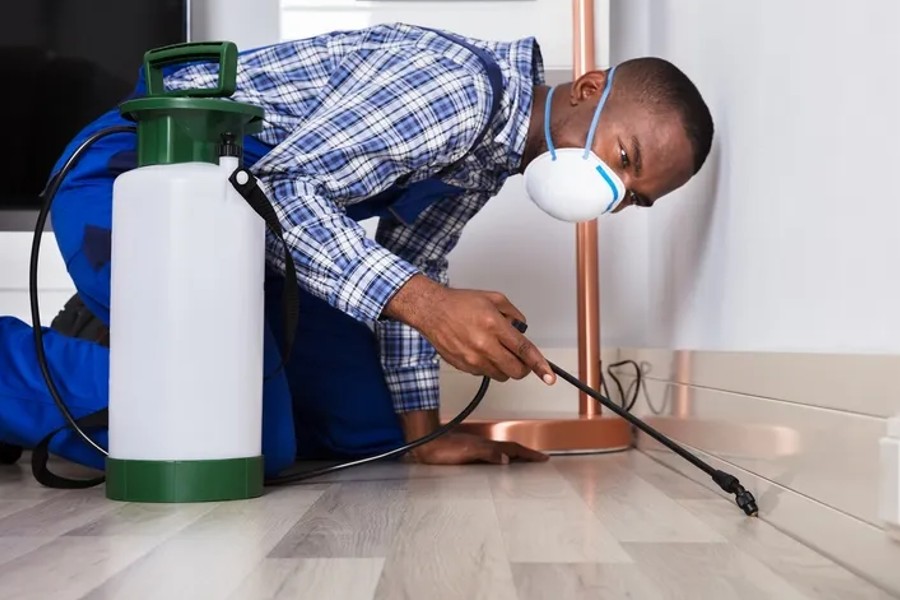
The New York City Emergency Management Department today issued a travel advisory for Thursday afternoon through Friday, December 23, 2022.
New York City is also urging New Yorkers in coastal communities to prepare ahead of the winter storm.
A Coastal Flood Warning is in effect for southern Queens for the Friday morning high tide. In combination with a new moon, the storm will produce widespread moderate to locally major coastal flooding with up to 3 feet of above-ground inundation in Jamaica Bay starting around 5:00 AM with peak surge expected between 8:00 AM and 9:00 AM. Water levels will then recede through about 10:00 AM. The neighborhoods at highest risk are Hamilton and Howard Beaches, Broad Channel, and the Rockaways.
Coastal Flood Watches are in effect for Brooklyn, Manhattan, and Staten Island from 6:00 AM to 11:00 AM Friday, and for the Bronx and northern Queens from 8:00 AM to 1:00 PM Friday. In these areas, widespread minor to locally moderate coastal flooding with up to 2 feet of above-ground inundation will be possible. Heavy rainfall coinciding with any of the high tides will exacerbate flooding conditions. In addition, 10- to 15-foot breaking waves at Atlantic-facing shorelines may result in significant dune erosion, overwash, and splashover, resulting in the potential for road closures. Residents in coastal communities should be alert for rising water and take appropriate action to protect life and property.
A citywide Wind Advisory is also in effect from 10:00 PM Thursday to 10:00 PM Friday. Sustained winds of 20 to 30 mph are expected to develop Thursday night with gusts up to 55 mph overnight into Friday. Peak gusts may reach as high as 60 mph mid-day Friday as a strong cold front pushes through the area. Winds will begin to diminish Friday evening and overnight into Saturday, but will remain breezy with gusts up to 30 mph through the weekend.
Rain will move into the area around noon Thursday with periods of heavy rainfall likely Thursday evening into the overnight. There may be a brief lull Friday morning before intensity increases again as the cold front approaches. A period of thunderstorms with lightning is also possible late Friday morning. Rain will end quickly with passage of the cold front in the early afternoon. In total, 1.5 to 2.5 inches of rain is expected with max rates around 0.5 inch per hour. Flash flooding is not anticipated, but widespread urban poor drainage and nuisance flooding is likely. Snow showers may then develop in the wake of the front Friday afternoon. Little to no accumulation is expected, however flash freezes will be possible on roadways.
As for the temperatures, a rapid drop of 10 to 15 degrees is expected over only a 1- to 2-hour period when the cold front moves through. Temperatures will continue to plummet overnight with a nearly 40-degree swing expected from Friday afternoon to Saturday morning with wind chills nearing zero. Black ice may form in areas with standing water as temperatures decrease.
“New York City is expecting several hazards with the incoming storm including high winds, heavy rain, cold temperatures, and coastal flooding. Prepare ahead of the holiday weekend,” said NYC Emergency Management Commissioner Zach Iscol. “Heavy rain in addition to a high tide will also bring moderate to major coastal flooding. We urge coastal residents to take steps to protect their property ahead of Friday morning’s high tide.”
MTA Bridges & Tunnels will be implementing a soft-ban on empty tractor-trailers and tandem (piggyback, dual, triple, etc.) trucks from 2000 hrs. on Thursday, 12/22 – 2000 hrs. on Friday, 12/23. The pedestrian walkways at the Cross Bay and Marine Parkway Bridges will also be closed during this time. The pedestrian walkways at the Robert F. Kennedy and Henry Hudson bridges will remain open weather permitting.
The City’s Downed Tree Task Force has been placed on alert. The multi-agency task force is responsible for coordinating the response to a large-downed tree event. NYC Emergency Management has also notified elected officials of the impending storm and has issued an Advance Warning System (AWS) message to more than 1,200 service providers who disseminate information to people with disabilities and others with access and functional needs. New York City Emergency Management will continue to work closely with The National Weather Service to monitor the storm and will also deploy Citywide Interagency Coordinators to coastal locations during the Friday high tide cycle to monitor impacts and facilitate coordination. To learn more about what agencies are doing in anticipation of the winter storm visit, NYC.gov/severeweather.
Safety Tips:
The safest place to be during high winds is indoors. Postpone outdoor activities if a wind advisory or high wind warning has been issued. High winds can bring down trees and power lines and can turn unsecured objects into dangerous projectiles.
To protect against the hazard of high winds, New Yorkers should:
- Check the area immediately surrounding your home for unsecured objects or potentially dangerous conditions. Tree limbs, garbage cans, yard debris, or other materials that can be moved by the wind are potential projectiles aimed at your home or parked vehicle.
- Bring inside loose, lightweight objects such as lawn furniture, potted plants, garbage cans, garden tools and toys.
- Anchor objects that would be unsafe outside, such as gas grills or propane tanks.
- Close up and secure patio umbrellas.
- Secure retractable awnings.
- Remove aerial antennas and satellite television dishes.
- Use caution when walking or driving high profile vehicles during periods of high winds.
- Stand clear of roadways or train tracks, as a gust may blow you toward an oncoming vehicle.
- Use handrails where available.
- Avoid elevated areas such as roofs, as wind speeds may be higher above ground level.
- Avoid anything that may be touchingdowned lines, including vehicles or tree branches. Puddles and even wet ground can conduct electricity in some cases.
- Watch for flying debris. Tree limbs may break and objects may become loose during strong wind gusts.
- Build or restock your emergency supply kit, including a flashlight, batteries, cash, and first aid supplies.
- Charge cell phones and any battery-powered devices.
- Turn your refrigerator and freezer to a colder setting. If you lose power, items that need refrigeration will stay cooler for longer. Keep refrigerator and freezer doors closed to prevent food spoilage.
- Check on friends, relatives, and neighbors, especially older adults and people with disabilities, access and functional needs, or health conditions. Help them to prepare if needed.
- If you lose power and have a disability or access and functional needs, or use Life Sustaining Equipment (LSE) and need immediate assistance, please call 911.
If you are driving during periods of high winds:
- Keep both hands on the wheel and slow down.
- Watch for objects blowing across the roadway and into your path.
- Keep a safe distance from cars in adjacent lanes, as strong gusts could push a car outside its lane of travel.
- Take extra care in a high-profile vehicle such as trucks, vans and SUVs, as these vehicles are more prone to being pushed or flipped by high wind gusts.
- New Yorkers are encouraged to call 911 to report emergencies at construction sites or buildings. New Yorkers who suspect a building or property has been structurally compromised should call 911.
Coastal Flooding Preparations
NYC residents living in coastal areas expected to experience moderate coastal flooding should take the following preparedness steps:
- Prepare a Go Bag that you can grab in case you need to leave your home in a hurry.
- Learn the safest route from your home or workplace to safe, high ground in case you have to evacuate. This should be part of your household emergency plan.
- If you live in a flood-susceptible area, keep materials, such as sandbags, plywood, plastic sheeting, and lumber, on hand to help protect your home.
- Stay informed. Before and during an emergency, the City will send emergency alerts and updates to New Yorkers through various channels, including Notify NYC. Sign up for emergency notifications at NYC.gov/NotifyNYC or call 311. You can also follow @NotifyNYC on Twitter.
- If you have to walk in water, walk where the water is not moving or use a stick to check the firmness of the ground in front of you.
- Stay out of any building if it is surrounded by floodwaters.
- When outside, avoid walking and driving through flooded areas. As few as six inches of moving water can knock a person over. Six inches of water will reach the bottom of most passenger cars, causing loss of control and possible stalling. One or two feet of water can carry away a vehicle.
To find more information about the winter storm visit, NYC.gov/severeweather.
Become a Harlem Insider!
By submitting this form, you are consenting to receive marketing emails from: Harlem World Magazine, 2521 1/2 west 42nd street, Los Angeles, CA, 90008, https://www.harlemworldmagazine.com. You can revoke your consent to receive emails at any time by using the SafeUnsubscribe® link, found at the bottom of every email. Emails are serviced by Constant Contact








